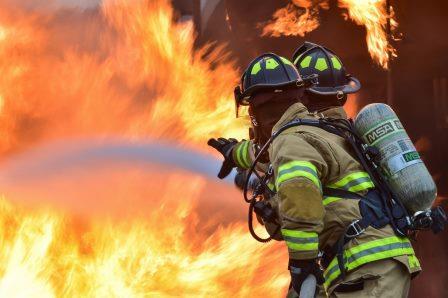Recommendations to help make your facility safer
With the academic year in full swing, schools across the country are beginning their first rounds of fire drills. As alarms blare and lights flash, teachers calmly evacuate their students from the building as the students chat with their friends.
 To them, it’s just another annoying fire drill that they will never actually have to use. But on March 4, 1908, Lake View School in Collinwood, Ohio, went up in flames when a furnace overheated, taking with it the lives of 172 students, as well as two teachers and one rescuer. It was the worst school fire in the history of the country and set in motion the development of easy and safe evacuation routes, including fire exits with safety bars, for schools and other public buildings.
To them, it’s just another annoying fire drill that they will never actually have to use. But on March 4, 1908, Lake View School in Collinwood, Ohio, went up in flames when a furnace overheated, taking with it the lives of 172 students, as well as two teachers and one rescuer. It was the worst school fire in the history of the country and set in motion the development of easy and safe evacuation routes, including fire exits with safety bars, for schools and other public buildings.
Because of the tragedy in Collinwood, fire safety regulations were changed not just in schools but in public buildings all over the country. Exit routes and fire escape designs were altered. Doorways were widened and new doorknob styles were put into use.
Create your fire evacuation plan
It’s important that your school have an emergency evacuation plan in place. A well-crafted fire evacuation plan can save lives. In fact, school administrators have a legal obligation to create disaster response plans.
Your evacuation plan must be as clear and efficient as possible. As you create the plan, be sure to work with teachers and other faculty members—they will have worked in classrooms and other settings in the school, and they may be able to foresee feasibility issues or other concerns that you may not think about. You should also submit the plans to your local fire department to determine if they have any suggestions for improvements.
Every fire evacuation plan should include these two things:
- Evacuation routes— Prepare easy-to-follow emergency evacuation maps, and describe, in detail, the evacuation route from each room. There’s no way of knowing where a fire will start beforehand, so it’s important to plan at least two routes of escape from each room, including a primary route and a secondary route (in case the primary path is blocked.)
- A designated meeting place—Teachers and students should know exactly where to meet after they have evacuated. The meeting place should be a safe location away from the building. Once outside, teachers should call roll to make sure everyone made it outside safely.
Implement the plan
Once you’ve created a plan:
- Post maps of evacuation routes in every room in the school. It’s important that the map and other posted instructions are simple and uncluttered, so if there is an emergency, individuals will be able to quickly find the information they need to evacuate safely.
- Ensure that teachers and other faculty members are trained and have memorized the evacuation route for their classroom(s).
- Hold random, unannounced drills several times a year. This will help students and faculty members get in the habit of knowing exactly how to respond to the sound of the fire alarm.
An effective fire evacuation plan will help ensure the safety and security of your students. Though you’ll hopefully never have to use it, it’s always best to be prepared.
Sonitrol Great Lakes has extensive experience with installing and maintaining fire protection systems, and works closely with local fire departments on plan submittals, permitting, and inspections. In addition, our installation team will test and inspect your system against local code requirements.
Whether your school needs ongoing service of an existing fire system or you are building, expanding or upgrading, Sonitrol Great Lakes can meet all your fire security needs. Contact us to learn more about our fire protection capabilities.
